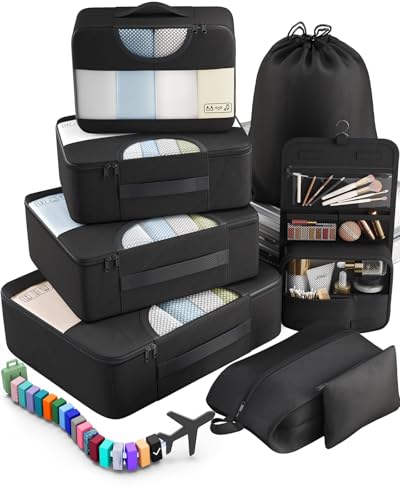In Myanmar, they use Type C, D, F, and G power plugs and outlets. The voltage is 230V, and the frequency is 50Hz.
So, you’ll need a travel adapter in Myanmar. Their plugs and outlets are different from the Type A and B ones we use back in the States.
Quick Overview of the Plugs in Myanmar:
- Plug type in Myanmar: C, D, F, and G
- Standard voltage: 230V
- Frequency: 50Hz
- Need a travel adapter? Yes, you do need a travel adapter
- Need a voltage converter? Device-specific — check before you pack
- Recommended plug adapter: Vintar Universal Travel Adapter Kit
This content is verified through local electrical regulations, international IEC standards, and practical input from travelers who’ve been there.
The Only Travel Adapter You’ll Need in Myanmar
Need a travel adapter for Myanmar? We don’t sell them, but we’ve done the research to find the best one—covering voltage, outlet types, and safety. Here’s the one we recommend:
Recommended Travel Plug Adapter
by 1,000+ travelers on Amazon
If you’re already on your way—or even at your destination—and realized you forgot a power adapter, no big deal. In most countries, you can usually grab one at the airport or pick one up at a nearby shop.
That said, it’s a smart move to get one ahead of time for your next trip. You’ll know it works, skip the last-minute scramble, and avoid getting stuck with a cheap one that might not hold up.
People visiting Myanmar often also travel to Thailand, India, and Bangladesh. Always check which type of plug or travel adapter you’ll need.
Power Outlets in Myanmar
In Myanmar, they use Type C, D, F, and G power plugs and outlets.
Type C

Type C outlets have two round prongs and no grounding pin. Type E and F plugs usually fit too, but grounded plugs will need an adapter.
Type D

Type D outlets have three large round prongs in a triangular layout and typically only accept Type D plugs, although Type C plugs might fit loosely and are not recommended for safe use.
Type F

Type F outlets have two round prongs and grounding clips on the sides. Type C and E plugs will also fit.
Type G

Type G outlets have three rectangular prongs in a triangular layout and built-in fuses. Other plug types won’t fit without an adapter.
Do You Need a Voltage Converter?
In Myanmar, the power supply operates on a different voltage than the U.S. standard of 120V, so a voltage converter is likely required for your devices to work properly.
Always double-check the voltage label on your electronics before traveling. If you see “100-240V, 50/60 Hz”, your device is compatible with multiple voltage systems and won’t need a converter. This includes phones, laptops, tablets, cameras, and personal care devices.

Which Travel Devices May Need a Converter?
Not sure which voltage converter to get? Take a look at the best-rated ones right here.
| Device | Need Converter? | Notes |
|---|---|---|
| Phone | ❌ No (usually) | Most modern phone chargers are dual voltage (100–240V) |
| Laptop | ❌ No (usually) | Check the power brick label for 100–240V |
| Hairdryer | ✅ Yes (often) | High wattage; many models are not dual voltage |
| Electric toothbrush | ⚠️ Check voltage | Some models are 110V only |
| Camera / DSLR | ❌ No (usually) | Most chargers are dual voltage |
| Power bank | ❌ No | Charges via USB, adapter is enough |
| Electric shaver / trimmer | ⚠️ Check voltage | Older or cheaper models may not support 230V |
| Tablet / iPad | ❌ No | All models are dual voltage |
| Portable fan | ✅ Yes (sometimes) | Many models are not compatible with 230V |
| Game console | ⚠️ Check voltage | Newer consoles like PS5 and Xbox are often dual voltage — check to be sure |
| Bluetooth speaker | ❌ No (usually) | Charges via USB |
| E-reader (Kindle, etc.) | ❌ No | USB charging only, no converter needed |
Top Travel Essentials to Pack
You’ve got your adapter—great. But here are a few more essentials that frequent travelers swear by. They’re small, but seriously useful.
Digital Luggage Scale
Packing Cubes
Power Bank
More About Myanmar
Myanmar is beautiful, complex, and full of contrasts. You’ll find ancient cities like Bagan, serene lakes like Inle, buzzing streets in Yangon, and surreal calm in Naypyidaw. Every region has its own vibe, and traveling through the country feels like flipping through completely different worlds.
But Myanmar isn’t just about stunning sights—it’s about people. Whether it’s a monk offering a quiet smile or a family sharing tea with you in their home, the warmth is unforgettable. Despite political struggles and recent instability, the human connection here runs deep.
Traveling in Myanmar takes a little extra effort. Infrastructure can be basic, and it’s important to stay aware of local conditions. But for those willing to go, the rewards are real: deep culture, breathtaking landscapes, and a sense of discovery you don’t find in more developed places. It’s not always easy—but it’s worth it.
Top places to visit in Myanmar: Yangon, Bagan, Mandalay, Inle Lake, and Naypyidaw.




